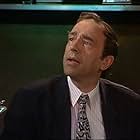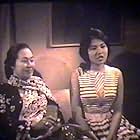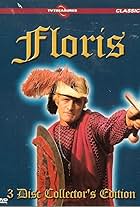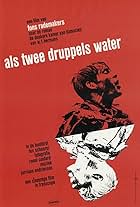Max Havelaar - meine Tage in der Südsee
Originaltitel: Max Havelaar of de koffieveilingen der Nederlandsche handelsmaatschappij
IMDb-BEWERTUNG
7,1/10
1069
IHRE BEWERTUNG
Füge eine Handlung in deiner Sprache hinzuAn idealistic Dutch colonial officer posted to Indonesia in the nineteenth century is convinced that he can make the kinds of changes that will actually help the local people of whom he is i... Alles lesenAn idealistic Dutch colonial officer posted to Indonesia in the nineteenth century is convinced that he can make the kinds of changes that will actually help the local people of whom he is in charge.An idealistic Dutch colonial officer posted to Indonesia in the nineteenth century is convinced that he can make the kinds of changes that will actually help the local people of whom he is in charge.
- Regie
- Drehbuch
- Hauptbesetzung
- Auszeichnungen
- 1 wins total
Adendu Soesilaningrat
- Regent
- (as E.M. Adenan Soesilaningrat)
Pitradjaya Burnama
- Djaska
- (as Pitradjaja Burnama)
Empfohlene Bewertungen
in making this film, rademaker opened up old dutch colonial wounds, dormant except for the novel, helped promote a good NGO cause, & exposed native corruption that continues into present indonesia. the max havelaar foundation was ahead of its time in promoting fair trade & continues to take a leadership role today. in the film, havelaar represents the idealist side of both dutch colonial rule & protestant ethos in the face of corruption & hypocrisy toward that global enterprise. aside from a brilliant film, powerful scenery & location, excellent acting, rademaker wove the narration close to the well-known novel. appropriate for its time,this film fits well with European self-examination of its colonial past, resonates with pontecorvo's burn/queimada, a masteropiece of duplicity & brando at his prime!
An idealistic Dutch colonial officer posted to Indonesia in the 19th century is convinced that he can make the kinds of changes that will actually help the local people he is in charge of, but soon runs into massive corruption on both sides.
MAX HAVELAAR, AN OLD DUTCH MASTERPIECE. VIewed at the Seattle Film Festival, June, 2007 .
Fons Rademaker's Dutch masterpiece "Max Havelaar" (The Netherlands, 1976, RT 170 minutes). Fons Rademaker was perhaps the greatest Dutch director and, based on this towering epic, clearly one of the greatest of all European directors. He died only a few month's ago (in 2007) and "Max Havelaar" is the Seattle film festival's fitting tribute to his memory. Rademakers "Havelaar" is a magnificent sweeping epic, based on a novel of the same name, telling a tale of Colonial oppression in the Dutch East Indies — today's Indonesia — in the mid 1850s. Max Havelaar was a Dutch colonial administrator with a sense of justice who struggled against a corrupt local Raja and his own corrupt racist fellow officials in favor of the ruthlessly exploited local farmers. Other than Rutger Hauer in a small role, there are no name actors known outside of Holland, although Peter Faber in the title role is superb and firmly believable as Max, and the large cast of Indonesian actors, male and female, young and old, are completely authentic, unlike Hollywood's phony depictions of such "natives". In short"Havelaar" is a classic of world cinema whose nearly three hours of screen time flit by timelessly. If one were to see only one Dutch film this one is it. Not to miss if it ever comes your Way.
MAX HAVELAAR, AN OLD DUTCH MASTERPIECE. VIewed at the Seattle Film Festival, June, 2007 .
Fons Rademaker's Dutch masterpiece "Max Havelaar" (The Netherlands, 1976, RT 170 minutes). Fons Rademaker was perhaps the greatest Dutch director and, based on this towering epic, clearly one of the greatest of all European directors. He died only a few month's ago (in 2007) and "Max Havelaar" is the Seattle film festival's fitting tribute to his memory. Rademakers "Havelaar" is a magnificent sweeping epic, based on a novel of the same name, telling a tale of Colonial oppression in the Dutch East Indies — today's Indonesia — in the mid 1850s. Max Havelaar was a Dutch colonial administrator with a sense of justice who struggled against a corrupt local Raja and his own corrupt racist fellow officials in favor of the ruthlessly exploited local farmers. Other than Rutger Hauer in a small role, there are no name actors known outside of Holland, although Peter Faber in the title role is superb and firmly believable as Max, and the large cast of Indonesian actors, male and female, young and old, are completely authentic, unlike Hollywood's phony depictions of such "natives". In short"Havelaar" is a classic of world cinema whose nearly three hours of screen time flit by timelessly. If one were to see only one Dutch film this one is it. Not to miss if it ever comes your Way.
Fons Rademakers is a Dutch director known for his adaptations of Dutch literature. Earlier I already wrote reviews about his films "The dark room of Damocles" (1963) and "The assault" (1986). With "Max Havelaar" he adapts one of the icons of Dutch literature.
"Max Havalaar" was written in 1860 and is about the Dutch colonial government in Indonesia. It has strong autobiographical elements as the writer Eduard Douwes Dekker has been a civil servant in the Dutch East Indies himself. One of the purposes of the book is to find rehabilitation for injustices Douwes Dekker believes were done to him during his career. He published the book under the pseudonym "Multatuli", latin for "I suffered a lot". This personal motive does not harm however the literary value of the novel.
"Max Havelaar" is a multi faceted book. It covers the following topics.
The way the colonial government of the Dutch East Indies was organized.
The way native princes collaborated with the Dutch government producing an intimately intertwined system of exploitation of the population.
A story within a story about this population featuring the boy Saïdjah and the girl Adinda.
The hypocrisy of Dutch traders in oriental spices, interpreting exploitation as development aid and beleiving it themself, as represented by the character of "Droogstoppel" (dry stubble).
A description about the essential element of bureaucracy as not including bad news in official reports because later you could be held accountable for not doing anything about it. This discription of bureaucracy is surprisingly topical for a novel from 1860!
The movie does not (and could not) treat al these elements. It is above all the story of a good Dutch civil servant (Max Havelaar played by Peter Faber), who tries to protect the native population, and a bad native prince (Adipati played by Adendu Soesilaningrat), who exploits the people. The other elements of the story are hinted at at best. The hypocrisy of Droogstoppel is magnificently illuminated by church services (with very hypocritical preaching) at the beginning and the end of the film.
For the Dutch film industry "Max Havelaar" is on the crossroad of the careers of two prominent Dutch directors. Fons Rademakers, the director of this film, was in the later stages of his career. Paul Verhoeven was the upcoming director at that time. Verhoeven himself was not involved with "Max Havelaar", but some people who would later become his regular "crew" were. I can mention scenario writer Gerard Soeteman, actor Rutger Hauer and cinematographer Jan de Bont. Nevertheless the film is "signature" Rademakers. The scene in which Havelaar saves a dog out af the sea with sharks nearby or the scene in which a native prince tries to blackmail a Dutch civil servant using beautiful young native dancing girls would have been done much more spicy by Verhoeven.
"Max Havalaar" was written in 1860 and is about the Dutch colonial government in Indonesia. It has strong autobiographical elements as the writer Eduard Douwes Dekker has been a civil servant in the Dutch East Indies himself. One of the purposes of the book is to find rehabilitation for injustices Douwes Dekker believes were done to him during his career. He published the book under the pseudonym "Multatuli", latin for "I suffered a lot". This personal motive does not harm however the literary value of the novel.
"Max Havelaar" is a multi faceted book. It covers the following topics.
The way the colonial government of the Dutch East Indies was organized.
The way native princes collaborated with the Dutch government producing an intimately intertwined system of exploitation of the population.
A story within a story about this population featuring the boy Saïdjah and the girl Adinda.
The hypocrisy of Dutch traders in oriental spices, interpreting exploitation as development aid and beleiving it themself, as represented by the character of "Droogstoppel" (dry stubble).
A description about the essential element of bureaucracy as not including bad news in official reports because later you could be held accountable for not doing anything about it. This discription of bureaucracy is surprisingly topical for a novel from 1860!
The movie does not (and could not) treat al these elements. It is above all the story of a good Dutch civil servant (Max Havelaar played by Peter Faber), who tries to protect the native population, and a bad native prince (Adipati played by Adendu Soesilaningrat), who exploits the people. The other elements of the story are hinted at at best. The hypocrisy of Droogstoppel is magnificently illuminated by church services (with very hypocritical preaching) at the beginning and the end of the film.
For the Dutch film industry "Max Havelaar" is on the crossroad of the careers of two prominent Dutch directors. Fons Rademakers, the director of this film, was in the later stages of his career. Paul Verhoeven was the upcoming director at that time. Verhoeven himself was not involved with "Max Havelaar", but some people who would later become his regular "crew" were. I can mention scenario writer Gerard Soeteman, actor Rutger Hauer and cinematographer Jan de Bont. Nevertheless the film is "signature" Rademakers. The scene in which Havelaar saves a dog out af the sea with sharks nearby or the scene in which a native prince tries to blackmail a Dutch civil servant using beautiful young native dancing girls would have been done much more spicy by Verhoeven.
"Max Havelaar" is a 19th century novel about the Dutch colonial rule in Indonesia - specifically, about one man's fight against the oppressive, bureaucratic and inhuman nature of the Dutch/Indonesian rule in the poor province of Lebak. The novel is (rightfully) considered one of Holland's most enduring and powerful works of literature; Fons Rademaker's 1976 cinema adaptation, however, has been largely forgotten.
This is a shame. While the script is ponderous and the pacing definitely not for the impatient, it is a haunting movie thanks to its big star: beautiful Indonesia itself, one of the most lush, mysterious places on earth. Beautifully photographed by Jan "Speed" de Bont, you can practically feel the tropical heat emerge from your screen... And to see the fair-skinned Dutch try to make sense of this environment makes you wonder how they built this empire in the first place. The recreation of the 19th century is also very well done - you can tell the budget must have been unusually high for a Dutch film of this period.
In any case, my advice is to sit through it, maybe in 3 sessions. I'd recommend "Max Havelaar" in particular for anyone interested in Indonesian history and culture.
This is a shame. While the script is ponderous and the pacing definitely not for the impatient, it is a haunting movie thanks to its big star: beautiful Indonesia itself, one of the most lush, mysterious places on earth. Beautifully photographed by Jan "Speed" de Bont, you can practically feel the tropical heat emerge from your screen... And to see the fair-skinned Dutch try to make sense of this environment makes you wonder how they built this empire in the first place. The recreation of the 19th century is also very well done - you can tell the budget must have been unusually high for a Dutch film of this period.
In any case, my advice is to sit through it, maybe in 3 sessions. I'd recommend "Max Havelaar" in particular for anyone interested in Indonesian history and culture.
10bspittle
I saw this movie about 30 years ago. I remember that I loved it. I spent 2 years in Java and it really captured a lot of the spirit there. The cinematography and colors in the move were fabulous. Indonesia was ruled by the Dutch for 450 years so they are not always that fond of their former colonizers. Anyone interested in a great book ought to read Krakatoa: the Day the World Exploded by Simon Winchester. It too, captured the country in the 1800's and explains in great part some of the tensions that still exist there.
If anyone knows where to get a copy of it, please post here. I've been trying off and on for years to get a copy through Ebay and internet searches but to no avail.
If anyone knows where to get a copy of it, please post here. I've been trying off and on for years to get a copy through Ebay and internet searches but to no avail.
WUSSTEST DU SCHON:
- WissenswertesPeter Faber got a new set of dentures during filming, but Producer and Director Fons Rademakers insisted he put the old ones back in because the new pair made his face look different.
- PatzerWhen Saidjah's brother chases the KNIL-soldiers, he is shot down with one shot. While falling, his forehead is intact. On the ground, you see a bullethole between his eyes
- Crazy CreditsThe title doesn't appear until 13 minutes into the movie.
Top-Auswahl
Melde dich zum Bewerten an und greife auf die Watchlist für personalisierte Empfehlungen zu.
- How long is Max Havelaar?Powered by Alexa
Details
- Erscheinungsdatum
- Herkunftsländer
- Sprachen
- Auch bekannt als
- Max Havelaar
- Drehorte
- Bogor, Indonesien(Istana Bogor/ Het Paleis Buitenzorg)
- Produktionsfirmen
- Weitere beteiligte Unternehmen bei IMDbPro anzeigen
- Laufzeit2 Stunden 50 Minuten
- Sound-Mix
- Seitenverhältnis
- 2.35 : 1
Zu dieser Seite beitragen
Bearbeitung vorschlagen oder fehlenden Inhalt hinzufügen

Oberste Lücke
By what name was Max Havelaar - meine Tage in der Südsee (1976) officially released in Canada in English?
Antwort
























